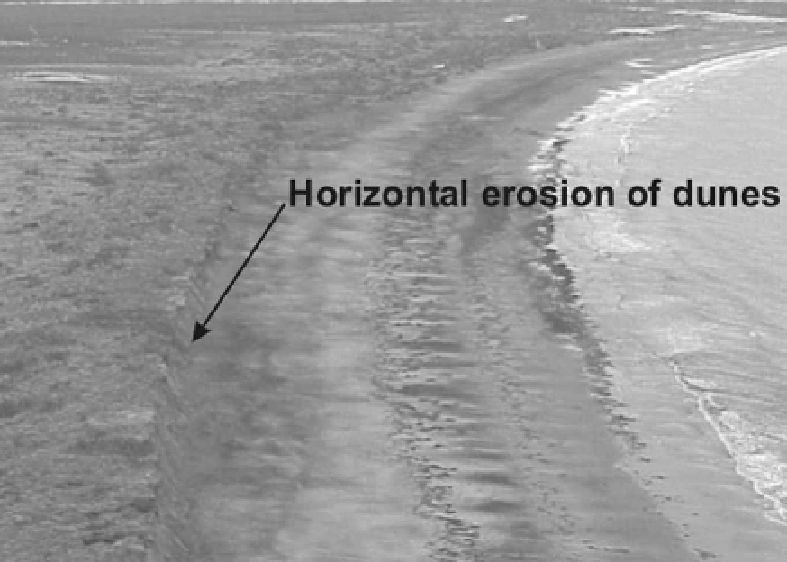Geoscience Reference
In-Depth Information
Figure 4.6.
Impact of Tropical Cyclone Vance (1999), Western Australia, upon coastal
dunes. Here the impact was not as severe as in Fig.
4.7
as one row of dunes is still
left intact except for scarping or horizontal erosion. Two rows of dunes were
completely removed here. Dunes are 6--7 m high above beach level. Photograph by
B. Hanstrum, Bureau of Meteorology, Western Australia.
when tsunami inundate sandy coasts (see Chapter 5). More studies of this style
of tsunami deposit have been undertaken than the apparently similar storm
deposits; as such the latter are not well documented in the literature.
An excellent example of a tropical cyclone deposited sand splay occurred
when Tropical Cyclone (TC) Vance, with central pressure 910 hPa, crossed the
Western Australian coast near Tubridgi Point in March 1999. Historically, this
is the most powerful cyclone to cross the Australian coast. Winds around the
eye wereestimatedat 300 km h
−
1
and Tropical Cyclone Vance generated the
strongest everrecorded wind gust in Australia of 267 km h
−
1
at Learmonth,
approximately 30 km from the eye. The zone of maximum winds struck a
section of coast composed of a sand barrier comprising three rows of paral-
lel dunes to approximately 6 m above the mid-tide level behind a wide sandy
beach. In most locations along this coast, the first two rows of dunes were
completely eroded and the sand transported away, presumably offshore, and
thethird or most inland dune row was eroded to form a steep scarp (Fig. 4.6).
Precisely where the zone of maximum winds struck, however, all three rows of
dunes were destroyed and the sand was transported inland as an extensive splay

Search WWH ::

Custom Search